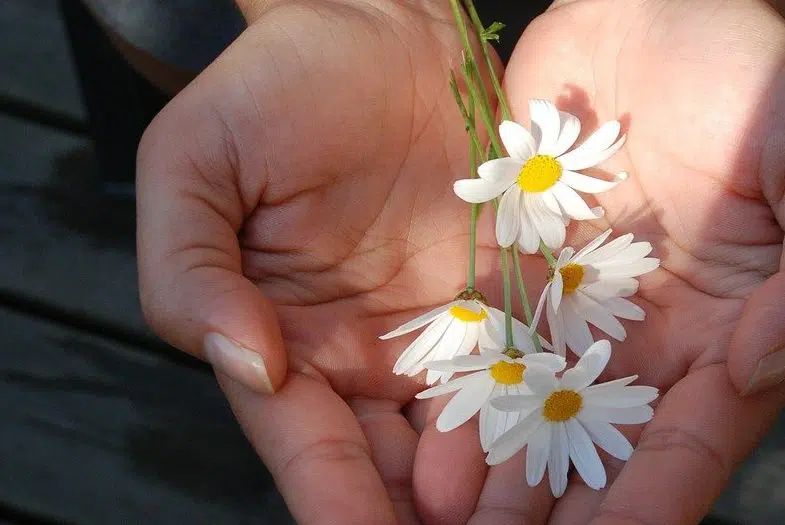
As trauma in general becomes seemingly more prevalent in our society, you’ve probably come across the term PTSD at one point or another. PTSD otherwise known as posttraumatic stress disorder is defined by the American Psychological Association as “a disorder that may result when an individual lives through or witnesses an event in which he or she believes that there is a threat to life or physical integrity and safety and experiences fear, terror, or helplessness.”[1] While in the past, the term was primarily associated with veterans of war, as the definition of PTSD has widened, so too has our understanding of the scope of individuals affected. According to the National Center for PTSD, about 6 out of every 100 people (6% of the population) will experience PTSD at some point in their life.[2]
PTSD symptoms are generally grouped into 4 categories:
- Intrusive memories
- Avoidance
- Negative changes in thinking and mood
- Changes in physical and emotional reactions.
While the first three are often best addressed with the help of a clinical psychologist or psychiatrist, the physical and emotional reactions faced by those suffering from PTSD offer an opportunity for holistic healing and support.
This is Your Body and Brain on PTSD
What exactly is happening to your body when it’s experiencing stress and how is that response related to PTSD? It all starts with the sympathetic nervous system. The sympathetic nervous system is the portion of the nervous system responsible for your fight or flight response. In times of high stress, the sympathetic nervous system is activated, causing a cascade of hormonal releases, including cortisol, the “stress hormone.” This reaction is usually short in length, with hormone levels returning to normal following the stressful event. However, when experiencing trauma, the body can be thrown outside of its normal threshold of stressful response and into a state of hyperarousal.[3] Over time, hyperarousal can be detrimental to both body and mind.
Symptoms of hyperarousal caused by PTSD can include:
- Being easily startled or frightened
- Always being on guard for danger
- Self-destructive behavior, such as drinking too much or driving too fast
- Trouble sleeping
- Trouble concentrating
- Irritability, angry outbursts, or aggressive behavior
- Overwhelming guilt or shame
Nervines for Hyperarousal Caused by PTSD
Nervines are herbs that specifically affect the nervous system. Along with additional lifestyle practices and traditional psychiatric therapy, nervines have the potential to be supportive for those dealing with hyperarousal caused by PTSD.
Nervine Relaxants
Nervine relaxants are herbs that can be used to support the relaxation of the nervous system.
Lavender (Lavandula angustifolia)
Lavender has widely been thought of as a calming and relaxing herb, it is no surprise that studies have shown that Lavender extracts have been shown to improve posttraumatic stress and nervous exhaustion. Lavender can be used to support PTSD in a number of ways, including ingestion as a tincture or infusion, or through inhalation of both the dried herb as well as lavender essential oils.[4]
Passionflower (Passiflora incarnata)
Passionflower has traditionally been used to support conditions of stress, anxiety, hypertension, and insomnia.[5] Passionflower’s gentle nervine effects make it a great option in the support of hyperarousal due to PTSD, particularly for presentations with insomnia and sleeping issues. A few mL of passionflower tincture before bed may support insomnia and sleeping issues associated with hyperarousal due to PTSD.
Nervine Tonics
Milky Oats (Avena sativa)
A trophorestorative to the nervous system, Milky Oats have shown ability to enhance memory and cognitive performance in humans.[6] “Milky Oats are specifically indicated in nervous states with exhaustion and inability to concentrate.”[7] When using Milky Oats, search for products created with fresh Milky Oat tops harvested in their “milky” state, as it is believed that this is the state when the active constituents are most potent.
Lemon Balm (Melissa officinalis)
As a nervine, sedative, mild antispasmodic, and hypotensive herb, Lemon Balm is particularly supportive for symptoms presenting as migraines, insomnia, depression, and hypertension, especially if associated with stress.[8] A hot tea or infusion of Lemon Balm sipped throughout the day may be supportive all day long.
It is important to note that PTSD is a complex and dynamic diagnosis. Every diagnosis and manifestation is unique, just as each individual person’s body and mind are unique and complex in their own right. While some holistic approaches may work for some, those same approaches may not work for others. When working with a person experiencing PTSD, always consider the whole person, mind, body, and spirit.
[1] American Psychological Association. (n.d.). Apa Dictionary of Psychology. American Psychological Association. Retrieved October 21, 2021, from https://dictionary.apa.org/posttraumatic-stress-disorder.
[2] National Center for PTSD. (2018, September 13). Va.gov: Veterans Affairs. How Common is PTSD in Adults? Retrieved October 21, 2021, from https://www.ptsd.va.gov/understand/common/common_adults.asp.
[3] U.S. Department of Health and Human Services. (n.d.). NIMH ” post-traumatic stress disorder. National Institute of Mental Health. Retrieved October 21, 2021, from https://www.nimh.nih.gov/health/topics/post-traumatic-stress-disorder-ptsd.
[4] Fatemeh Effati-Daryan et al., “Effect of Lavender Cream with or without Foot-Bath on Anxiety, Stress and Depression in Pregnancy: A Randomized Placebo-Controlled Trial,” Journal of Caring Sciences 4, no. 1 (2015): 63-73, https:///doi.org/10.5681/jcs.2015.007.
[5] Stansbury, J. (2020). Herbs for Psychiatric Conditions. In Herbal Formularies for Health Professionals Volume 4: Neurology, Psychiatry, and Pain Management, including cognitive and neurologic conditions and emotional conditions (p. 148). essay, Chelsea Green Publishing.
[6] Porst H., et. al., SOP conservative (medical and mechanical treatment of erectile dysfunction. J Sex Med. 2013 Jan;10(1):130-71.
[7] Tilgner, S. (2020). Materia Medica. In Herbal Medicine: From the Heart of the Earth (p. 160). essay, Wise Acres.
[8] Tilgner, S. (2020). Materia Medica. In Herbal medicine: From the heart of the Earth (p. 137). essay, Wise Acres.
